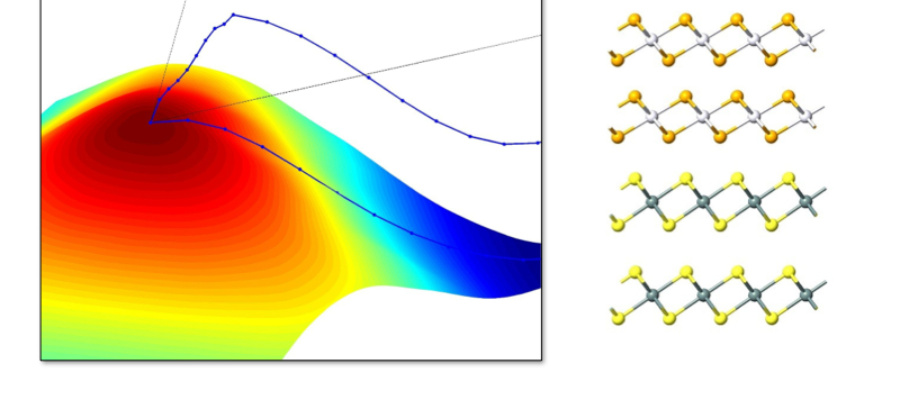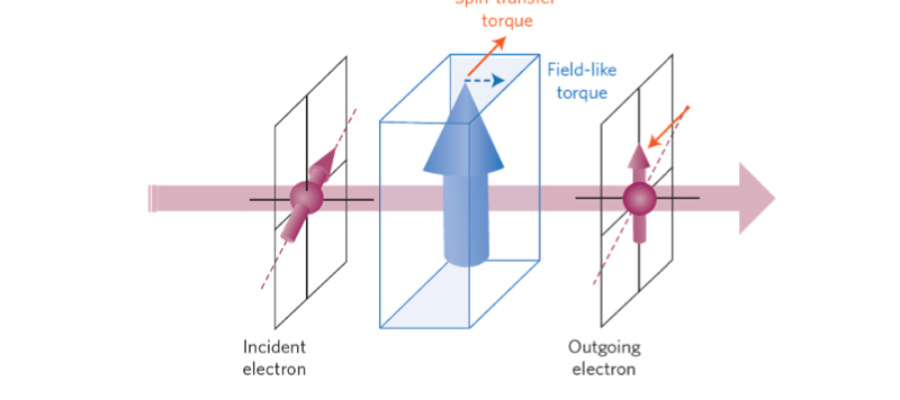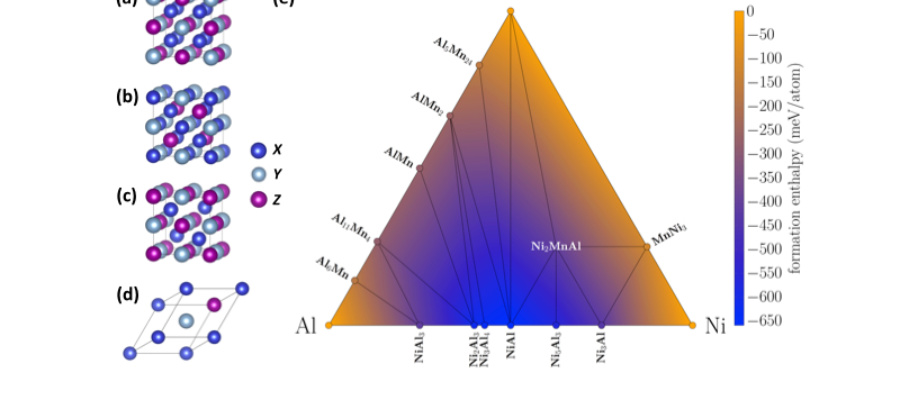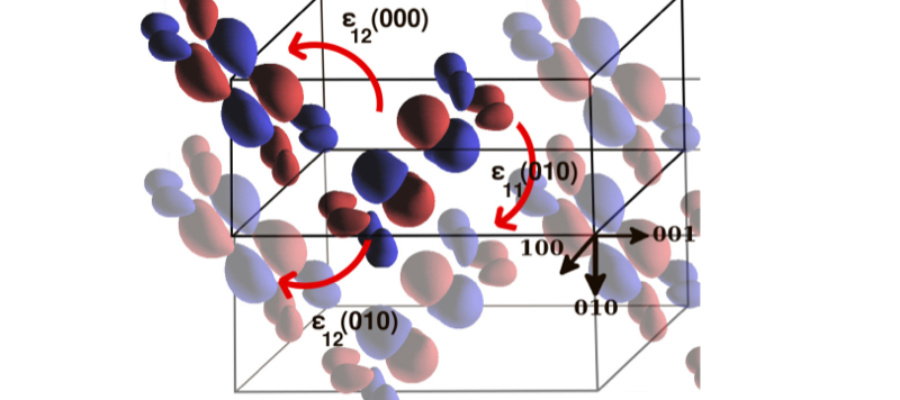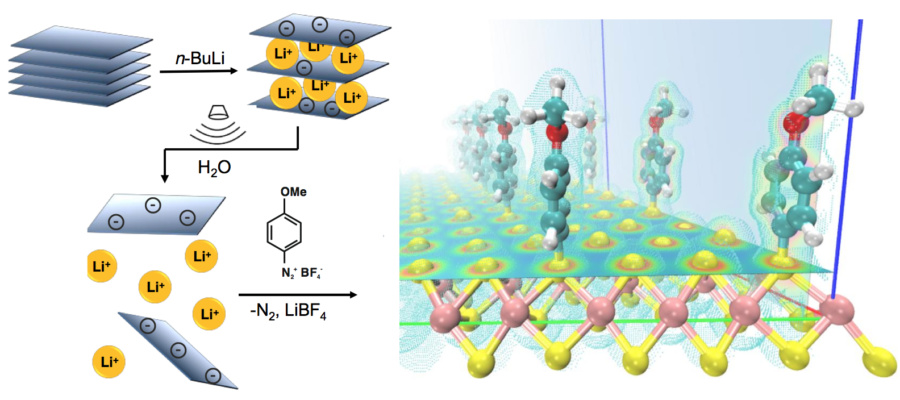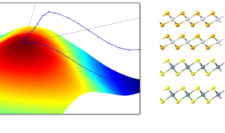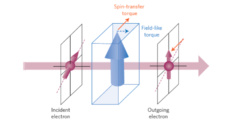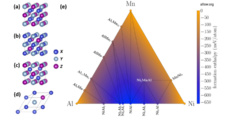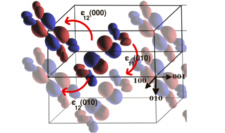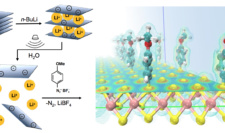Created in 2002 the Computational Spintronic Group, headed by Prof. Stefano Sanvito, is a world-leading research group in theoretical materials science. The team comprises about 20 researchers, including PhD students and postdoctoral scientists, and is active in various aspects of materials and nano-devices science. In particular the group both develops new computational techniques/algorithms and applies them to current topical problems in materials/devices science. The group is currently divided into four sub-groups and develops research over five main topics.
Materials Design
Today there are probably about 250,000 inorganic compounds known to mankind, of which only about 100,000 have been thoroughly characterized crystallographically. On the one hand this is very large set, so that finding the most appropriate material for a given application may be a rather difficult task. On the other hand, 250,000 is still a rather small number compared to all possible materials that can be formed by simply combining the elements of the periodic table over the available crystal structure prototypes. The goal of our materials design effort is that of solving the inverse problem in materials science, namely that of designing the most appropriate compound, or family of compounds, tailored for given specific applications. Our strategy is that of combining advanced electronic structure theory (mostly density functional theory) with database and machine-learning techniques. Follow the link to learn more about Materials Design.
Organic Electronics
In the last decade there has been a tremendously growing effort aimed at integrating organic materials into electronic devices. This is driven by the opportunity to fabricate devices by cheap chemical methods that can be implemented on flexible substrates, thus enabling disposable, flexible and wearable electronics. Our research program aims at constructing a multi-scale fully ab initio theory of charge and spin-transport in single-crystal molecular devices. This consists in designing techniques to extract effective Hamiltonians from first principles calculations and then in evaluating microscopic thermodynamics quantities (e.g. the mobility) from such Hamiltonian by using statistical methods such as Monte Carlo simulations. Furthermore, we extensively employ constrained density functional theory to evaluate the levels alignment of the organic molecules with the inorganic electrodes. Follow the link to learn more about Organic Electronics.
Spintronics
The spin degree of freedom is today as important as the electrical charge in electronic applications. These include, for instance, the read-heads of hard-disk drives and a multitude of magnetic field sensors. The Computational Spintronics Group has a long-standing unique experience in studying the interplay between electrical currents and magnetic order in solid state devices. We develop and maintain the Smeagol code, which combines density functional theory with the non-equilibrium Green’s functions scheme for quantum transport to compute the current-voltage characteristics of magnetic devices. As such we are able to predict giant and tunneling magnetoresistance of junctions with complex electronic structures. More recently we have move our attention to computing the effects of a current on the magnetization of a junction, namely on computing spin-transfer torques. Furthermore, we have combined Smeagol with an atomistic spin-dynamics simulator, so that we are able to predict the time-evolution of the magnetization of a magnetic device. Follow the link to learn more about Spintronics.
Computational Electrochemistry
Predicting the chemical reactions taking place at an electrified interface between a metal and a liquid is a long-standing challenge in materials modelling. This requires an accurate description of a liquid solution and its interface with the metal (e.g. double layer formation). Most importantly it requires treating the problem as an open-boundary conditions one, where the electrostatic potential in the cell is set by an external circuit. In the last few years we have used our density functional theory open-boundary condition method, developed originally for quantum transport, to tackle the electrochemical problem. This involves performing ab initio molecular molecular dynamics in the presence of an electrical current and an external potential. Follow the link to learn more about Computational Electrochemistry.
Materials Research for Industry
Today many industry sectors are able to make business decisions thank to the knowledge coming from numerical simulations. Most importantly traditional model-intensive technological areas, such as the pharmaceutical or the financial ones, are now joined by advanced manufacturing in general, where predicting materials properties is paramount. The Computational Spintronics Group works closely with industry to deliver solutions across multiple technology sectors, including energy, aerospace, electronics and data storage. The group has access to a range of funding mechanisms, which are tailored to the specific industry demand, and can avail of the expertise of a team of 20 researchers. To learn more about our Industry activity follow the link to materials research for Industry.

